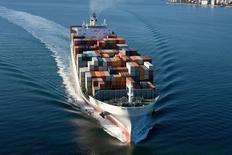- The project involves a triple-digit million investment and seeks funding from Innovation Fund Denmark.
- The project will be executed in three stages, starting with a 10 MW electrolysis plant by 2023.
- Stage two will feature a 250 MW electrolysis plant by 2027, producing renewable methanol and jet fuel.
- Stage three aims to upgrade the plant's capacity to 1.3 GW, contingent on offshore wind power development.

Project Overview
Haldor Topsoe has joined a Danish initiative to develop sustainable fuels, partnering with companies like Ørsted, Copenhagen Airports, A.P. Moller – Maersk, DSV Panalpina, DFDS, SAS, Nel, and Everfuel. The project aims to make sustainable fuels competitive with fossil fuels by maturing technologies and proving them on an industrial scale.
Investment and Funding
The project involves a triple-digit million investment from the participating companies and has applied for substantial funding from Innovation Fund Denmark. The goal is to cover the entire value chain for renewable hydrogen and sustainable fuels.
Technological Contributions
Topsoe will contribute its expertise in carbon emission reduction technologies, particularly in efficient hydrogen production from solid oxide cell electrolysis (SOEC). The company will also provide proven technologies to produce sustainable fuels like jet fuel, ammonia, and methanol by converting captured CO2 using hydrogen from water electrolysis.
Project Phases
The project will be executed in three stages, with the first stage expected to be operational by 2023. This initial phase will include a 10 MW electrolysis plant producing renewable hydrogen for trucks and potentially buses. By 2027, the second stage will feature a 250 MW electrolysis plant, combining renewable hydrogen production with CO2 capture from municipal waste or biomass to produce renewable methanol and jet fuel. The third stage aims to upgrade the electrolysis plant's capacity to 1.3 GW and capture more CO2.
Dependencies
The timing of the second and third phases will depend on the execution of an offshore wind power project off the island of Bornholm in Denmark, which is necessary to supply the large-scale renewable electricity required.

